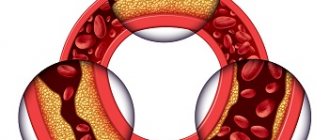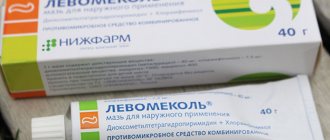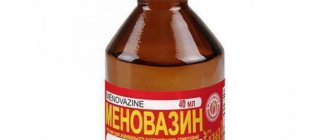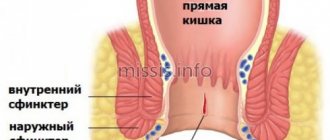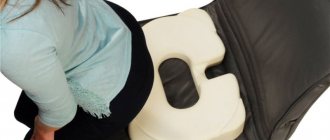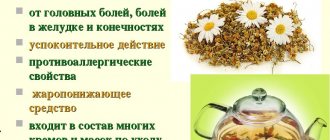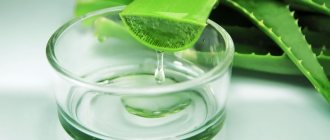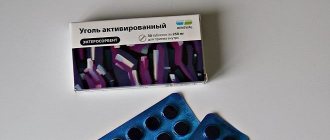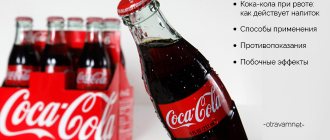Coca-Cola and viruses
The recipe for making Coca-Cola is secret - only the composition is known. Among the ingredients is phosphoric acid, which supposedly helps you recover faster from rotavirus. There is no scientific evidence of this fact, and doctors recommend that a sick person avoid drinking any carbonated drinks during an exacerbation.
About the disease
Rotavirus infection itself does not pose a danger to the patient, as many people think. The disease does not subsequently disrupt intestinal function. However, pathology can cause dehydration of the body, and this is truly dangerous. In case of inaction, the infection leads to a worsening of the disease and in 4% of sick cases leads to death.
The main symptoms of intestinal flu are as follows:
- nausea, vomiting;
- feeling of heartburn;
- severe diarrhea;
- abdominal discomfort.
The onset of the pathology is similar to ARVI. The infection occurs more often in the autumn and winter seasons. All actions are aimed at eliminating them. As the symptoms decrease, the person’s condition improves.
Etiology
Taxonomy of the causative agent:
- kingdom - viruses;
- family - Reoviridae;
- genus - Rotavirus.
The name “Rotavirus” (from the Latin “rota” - wheel) was assigned to this microorganism due to its morphological appearance. Its genome consists of 11 double-stranded RNA segments surrounded by three concentric capsids (viral envelopes).
The RNA segments encode six structural (VP1 - VP7) and six non-structural proteins (NSP1 - NSP6). Structural proteins in the mature viral particle determine host specificity, the ability of the virus to enter the cell, and its enzymatic functions. They contain epitopes that generate an immune response. Non-structural proteins take part in genome replication, i.e. in the synthesis of viral DNA. One of them, NSP4, has toxin-like activity.
To date, ten different types of rotavirus are known (A to J). They are classified according to antigenic differences in the main component of the inner capsid, VP6. Rotavirus A is the most common cause of infection in children. This type of rotavirus is classified into genotypes based on differences in the sequence of RNA segments encoding the outer capsid proteins VP7 and VP4. In humans, 12 VP7 antigens (type G) and 15 VP4 antigens (type P) have been identified. Today, about 90% of all human rotavirus infections are caused by five combinations of GP types.
The structural features of rotavirus make it highly resistant to external factors and disinfectants. In this case, the virus quickly dies during boiling.
Epidemiology
The source of infection is an infected person with obvious signs of the disease or a virus shedding person (asymptomatic). The patient is contagious from the onset of the first symptoms until the end of the illness (5-7 days).
Rotavirus infection affects almost every child under 5 years of age. In developing countries (with low income), the first infection of children with rotavirus occurs at the age of 6-9 months. The incidence in children under one year of age in these countries is 80%, while in developed countries it is 65% [20].
Rotavirus infection of the gastrointestinal tract in adults accounts for 2% to 5% of cases of seeking medical help. Elderly people are especially susceptible to the disease.
Rotavirus infection is characterized by a fecal-oral transmission mechanism, i.e. through the digestive system. This mechanism is implemented in three ways:
- water;
- household contact (through virus-contaminated hands or household items);
- food (through milk, dairy products and breast milk substitutes).
The disease is characterized by winter-spring seasonality and universal susceptibility. After an infection, a person can get sick again. This is due to the seasonal change in circulating serotypes. However, with repeated infections, the disease will be milder [1] [2] [3] [4] [5].
If you notice similar symptoms, consult your doctor. Do not self-medicate - it is dangerous for your health!
Contraindications
Rotavirus is treated with Coca-Cola only if there are no contraindications. The product should not be used frequently.
Restrictions on drinking Coca-Cola are:
- diabetes;
- ulcers of the digestive system, duodenum;
- acute, chronic gastritis;
- disorder of the biliary system;
- increased acidity in the intestines;
- pancreatic disorders.
If a person has any of these diseases, rotavirus infection in adults and children should not be treated with Coca-Cola. Otherwise, a sudden exacerbation of the existing pathology may occur. In addition, it is important to use disease prevention: thoroughly wash vegetables, fruits, hands after going outside and using the toilet, and avoid contact with infected people. This is the only way to prevent infection with rotavirus infection.
Symptoms of rotavirus infection
The incubation period lasts from 12 hours to 5 days. The clinical picture of the disease is represented by vomiting, fever and prolonged watery diarrhea.
In the first days of the disease, short-term moderately severe catarrhal syndrome may be observed - nasal congestion, runny nose, cough. The temperature reaction lasts 2-4 days and is accompanied by signs of intoxication - lethargy, weakness, loss of appetite. In the blood serum of children with rotavirus gastroenteritis (damage to the gastrointestinal tract), there is an increase in the levels of interleukin-6 and tumor necrosis factor. This causes a feverish reaction.
Vomiting also develops on the first day of illness. It is repeated in nature and lasts up to two days. In addition, diarrhea is noted, the duration of which is from 2 to 8 days, the frequency of bowel movements is from 3 to 20 times a day, depending on the severity of the infection.
Dysfunction of the gastrointestinal tract is in the nature of gastroenteritis - inflammation of the mucous membrane of the stomach and intestines. It is accompanied by the release of a large volume of watery yellow stool without visible pathological impurities.
Rotavirus gastroenteritis is also characterized by abdominal pain syndrome. The pain is cramping and localized in the upper abdomen. Often there is bloating, flatulence and rumbling along the intestines
Pathogenesis of rotavirus infection
Rotavirus multiplication occurs in mature enterocytes, i.e., near the tips of the villi and in the enteroendocrine cells of the small intestine. Enterocytes produce factors necessary for effective pathogen attachment to the intestinal wall. Attachment of rotavirus to host cells is mediated by the outer capsid protein VP4 and binding partners on the host cell surface, gangliosides GM1, GD1a, and histoblood group antigens (HBGA).
The interaction between rotavirus and HBGA depends on the rotavirus genotype. After the host cell absorbs the infectious agent, the synthesis and assembly of viral components occurs in zones of its cytoplasm. Newly produced viruses are released from cells by lysis (dissolution) or vesicular transport (transfer of molecules “packed” into vesicles). Replication of the virus in the duodenal mucosa of infants causes villous shortening and atrophy, loss of microvilli, and proliferation of mononuclear cells.
Rotavirus diarrhea has two proposed mechanisms:
- osmotic - a decrease in the absorption function of the intestinal epithelium due to damage or death of enterocytes;
- secretory - due to the action of the non-structural protein NSP4 and activation of the intestinal nervous system.
The destruction of enterocytes by the virus leads to a decrease in the absorption of disaccharidases, sodium ions and water from the mucous membrane of the small intestine. A large amount of undigested osmotically active substances enters the colon, which is not capable of absorbing them, which leads to osmotic diarrhea.
The non-structural protein of the virus NSP4, which has toxin-like activity, binds to intestinal enterocytes and, through phospholipase C, increases the level of cytoplasmic calcium, which in turn activates calcium-dependent chloride channels. Their activation causes excessive chloride production, creating an osmotic gradient that facilitates the transport of water into the intestinal lumen, leading to diarrhea. In conjunction with infection, NSP4-mediated increases in intracellular calcium levels may also lead to the secretion of serotonin by enteroendocrine cells, which enhances small intestinal motility.
In addition, rotavirus infection leads to delayed gastric emptying, which causes nausea and vomiting. This disorder is associated with increased production of gastrointestinal hormones (secretin, gastrin, glucagon and cholecystokinin), as well as activation of neural pathways involving parasympathetic neurons.
Action of the drink
Many parents, in search of therapeutic measures for rotavirus in children, use the Coca-Cola therapy method.
At the very beginning, Coca-Cola was produced as a means to normalize the digestive tract. Its constituent components were the fruits of the cola tree, as well as extracts from coca leaves that grew in the tropics. It was produced to improve the functioning of the gastrointestinal tract, and it could only be purchased at a pharmacy.
The drink has been around for over 100 years. Coca-Cola helped cope with psycho-emotional and nervous shocks and had a calming effect. Already, 10 years later, the drink began to be produced in bottles, everyone could buy it. About 20 years after it appeared, they stopped putting cocaine in it. Various types of Coca-Cola were formed.
We recommend: What is colonic diverticulosis and how to treat it?
The positive effect is caused by the presence of phosphoric and carbonic acid in the composition. In general, it has been observed that drinking a carbonated drink helps eliminate diarrhea and nausea.
Classification and stages of development of rotavirus infection
Rotavirus infection is classified according to severity and clinical form.
There are three degrees of severity:
- light;
- moderate;
- heavy.
The severity of the disease is determined by the number of episodes of vomiting, loose stools and the development of dehydration syndrome. With mild severity, there are no signs of dehydration. In moderate cases, grade 1-2 dehydration is observed. A severe course is characterized by a clinical picture of shock: fainting, thirst, tachycardia, pale skin, drop in blood pressure.
We recommend: Prevention of sexually transmitted diseases
According to the clinical form, two forms of the disease are distinguished: typical and atypical. A typical rotavirus infection is accompanied by a triad of typical symptoms - vomiting, diarrhea and fever. The course of the atypical form of the disease is, in turn, divided into two types:
- erased course - only vomiting or only loose stools may be observed, fever is often absent, the duration of symptoms is short-lived - 1-2 days;
- asymptomatic - absence of clinical symptoms, while a virus is detected during a stool examination. The release of the infectious agent lasts from 4 to 57 days.
Reviews
Yulia, 34 years old: “My two sons fell ill with enterovirus, and they also infected their dad. We didn’t go to the hospital right away, I called a friend, she works for me in the infectious diseases department. She told me the symptoms, she advised me to try treatment with Coca-Cola, and if that doesn’t help, see a doctor. I poured half a glass for my sons and a whole glass for my husband. By the end of the day, they all felt better; after a day, the diarrhea and nausea generally disappeared. And they didn’t even take any pills. To be honest, we didn’t expect this ourselves.”
Ruslan, 28 years old: “I caught rotavirus from my nephew. I felt terrible for 3 days. I was tormented by vomiting and diarrhea. On the third day, someone told my wife to try giving her Coca-Cola to drink. Of course, I was surprised by this treatment, but I love this drink in itself. I ended up drinking 0.3 ml of Coca-Cola. Surprisingly, by evening I felt better, I even ate. In general, the product really works, although I don’t know what it consists of.”
We recommend: Causes of intestinal adhesions after surgery and how to remove them
Complications of rotavirus infection
Complications of the disease include dehydration syndrome, secondary bacteremia and candidemia (penetration of Candida bacteria and fungi into the blood), convulsions, aseptic meningitis, encephalitis, myocarditis, bronchopneumonia, hepatitis and acute renal failure.
One of the most common complications is dehydration syndrome, which develops with the loss of water and electrolytes. Determining its severity is extremely important to determine fluid replacement tactics for a particular patient.
When assessing the patient's condition, it is necessary to take into account the degree of dehydration - the type of fluid lost (extracellular and/or intracellular) and its volume. In children with rotavirus gastroenteritis, fluid loss usually occurs primarily from the extracellular space.
The amount of extracellular fluid lost is objectively measured by the change in weight from baseline. Since the weight before the disease is often not reliably known, a number of clinical signs (thirst, decreased urination, lethargy, irritability), as well as capillary refill time and objective examination data (pulse and respiratory rate, blood pressure, skin turgor) are used to assess the degree of dehydration. speed of skin fold straightening). Based on the totality of these data, dehydration is divided into degrees of severity:
- mild (loss of 3-5% fluid) - clinical signs may be absent or minimal;
- moderate (loss of 6-9% fluid) - tachycardia, gradual drop in blood pressure, decreased skin turgor, dry mucous membranes, irritability, prolongation of capillary refill time to 3 seconds, rapid shallow breathing, decreased urine volume, lack of tears, in infants - sunken fontanel;
- severe (loss of ≥ 10% fluid) - clinical picture of shock.
It should be noted that clinical signs of dehydration are reliable indicators in a comprehensive assessment: individually, each of them lacks sensitivity and specificity.
For diagnostic accuracy, the European Association of Pediatric Gastroenterologists, Hepatologists and Dietitians (ESPGHAN) developed a clinical dehydration score in 2008. It takes into account 4 parameters: general appearance, condition of the eyeballs, mucous membranes and the presence of lacrimation. According to this scale:
- A score of 0 indicates no dehydration;
- 1-4 points correspond to a mild degree of dehydration;
- 5-8 points - moderate and severe severity.
Another fairly common complication is seizures. They manifest themselves in the form of short focal seizures within 1-2 days and have a favorable prognosis.
All neurological complications of rotavirus gastroenteritis (convulsions, transient loss of consciousness, encephalopathy) are manifestations of extracellular dehydration and are caused by the development of hyponatremia - a decrease in sodium levels in the blood. The severity of symptoms is determined by the degree of hyponatremia and the rate of its increase. In addition, rotavirus RNA has been found in the cerebrospinal fluid (CSF) of patients with rotavirus diarrhea and seizures and/or encephalitis, but the diagnostic significance of this finding remains unclear.
If fever persists or resumes after the third day of rotavirus infection, it is necessary to exclude bacteremia and the development of secondary bacterial complications. The exact mechanism of their occurrence is unknown, but it is believed that infected enterocytes become more vulnerable to bacterial invasion during the disease.
In addition to complications caused by gastroenteritis, rotavirus infection can serve as a trigger for the onset of type 1 diabetes mellitus in genetically predisposed individuals.
Diagnosis of rotavirus infection
Rotavirus antigens can be detected in stool using enzyme-linked immunosorbent assay (ELISA), immunochromatography and reverse transcriptase polymerase chain reaction (RT-PCR).
A less sensitive method, but giving a quick answer, is the use of immunochromatographic test strips. Using ELISA, the virus is detected in 94% of cases after 1-4 days of illness and in 76% of cases after 4-8 days of illness.
RT-PCR is a highly sensitive method that allows genotyping of viral isolates and detection of the virus over a longer period compared to ELISA. The amount of viral RNA excreted in feces is directly related to the severity of rotavirus diarrhea in children.
The standard examination of a patient with rotavirus gastroenteritis also includes a clinical and biochemical blood test, stool culture for pathogenic flora and a coprogram (general stool analysis). According to the results of a biochemical blood test, the patient may have moderately elevated levels of enzymes such as alanine aminotransferase and aspartate aminotransferase. The presence of these enzymes is associated with the development of hepatitis.
How to use when treating an infection
A small amount of a still drink for rotavirus (2-3 tablespoons for a child, up to 100 ml for an adult) can be drunk as a supplement to medicinal solutions, which have a neutral taste and quickly become boring. There is no point in hoping that Cola will cure rotavirus.
Raisin decoction
The only positive effect is the intake of huge amounts of simple carbohydrates. If acetonemic syndrome develops against the background of a viral infection, the drink may be beneficial. The problem occurs in children when glycogen reserves in the liver are depleted. There is a known safe way to alleviate the child’s condition and reduce acetone - give the baby a ready-made glucose solution purchased at the pharmacy (10% or 40%) and offer a rich raisin decoction.
How is rotavirus treated?
There is no specific treatment regimen for rotavirus infection. As with all viral diseases, antibiotics will not help. For treatment, antiviral drugs and antipyretics are used, depending on the condition.
With a mild course of the disease, the symptoms go away on their own. Patients are prescribed a diet; alcohol, nicotine, caffeine, and rough foods that irritate the stomach and intestines must be excluded.
The American Association of Pediatrics does not recommend giving children boiled milk, salty broth or soup and does not advise trying to make a formula to replenish lost minerals yourself.
Enterosorbents that soften the symptoms of diarrhea and vomiting can help cope with the symptoms of a viral infection. Patients are also prescribed drugs to restore fermentation in the digestive system.
Glass of water CC0
The main danger of rotavirus is dehydration. Its pronounced symptoms are dizziness, headache, fatigue, dry mouth, dry lips and eyes, and rare urination (less than three to four times a day).
If you don't replenish lost fluids, dehydration will worsen and complications such as low blood pressure and kidney failure may occur. This can be fatal.
Diet for rotavirus infection
On the first day of illness, if there is frequent vomiting and lack of appetite, you can abstain from food. However, as soon as your health begins to improve, you need to gradually return to a nutritious diet to speed up recovery. It is important to drink as much fluid as possible throughout your illness.
When infection develops in infants, they continue to be fed as before: breast milk or special formulas. It is only recommended to increase the frequency of feeding. In some cases, your doctor may recommend the use of dietary supplements or medications that contain lactase. This is an enzyme that breaks down milk and helps its absorption, which is especially important for infants. It is known that during rotavirus infection, the activity of the body’s own lactase decreases, which leads to poor absorption of dairy products, increased diarrhea and bloating.
For older children and adults, it is advisable to increase the frequency of meals by reducing the serving size. Dairy products, snacks, and processed foods are excluded from the diet, and the consumption of juices, raw fruits and vegetables, legumes and other foods rich in carbohydrates is limited.
The most preferred are porridges, liquid soups, boiled soufflés, steamed cutlets, and yesterday's bread. You should not eat fried, spicy, pickled or smoked foods. This diet should be followed until complete recovery and for 2-3 days after.
Drug treatment of rotavirus infection
To help the body cope with the virus faster, you can use antiviral drugs, for example: Arbidol, Viferon and others. The peculiarity of this treatment is the need to start taking the medicine with the first symptoms of intestinal flu. Otherwise, the effectiveness of antiviral agents is reduced. Antiviral protection is also enhanced by immune stimulating agents: Cycloferon, Antirotavirus immunoglobulin, Complex immunoglobulin preparation (CIP) and others. It is advisable to consult a doctor before use.
We recommend: How to avoid infection with ascariasis?
Antibiotics are not indicated for rotavirus infection. In rare cases, a doctor may prescribe them if there is a high risk of bacterial complications or mixed infections (when, in addition to rotavirus, bacterial infection is detected).
To combat intoxication and diarrhea, sorbents are prescribed. These are drugs that are able to absorb toxins and gases from the gastrointestinal tract with their surface. Many of them have a fixing effect, that is, they normalize stool. At the pharmacy without a prescription you can buy sorbents such as: Smecta, Polysorb, activated carbon, Filtrum-STI, etc. Sorbents must be taken separately from other medications, with an interval of at least 30 minutes.
To relieve the gastrointestinal tract and speed up the restoration of its full functioning, enzyme preparations are prescribed and taken with meals. These are Creon, Pancreatin, Mezim, Lactase, etc. In addition, pro- and prebiotic preparations are widely used in the treatment of rotavirus gastroenteritis: Enterol, Bactisuptil, Bifiform, Linex, Acilact, etc.
At high temperatures, you can use paracetamol or ibuprofen according to the instructions.
What disease can Coca-Cola cure?
Five years later, in 2013, the present study on the benefits of cola was published in the peer-reviewed scientific journal Alimentary Pharmacology & Therapeutics. True, we were talking about the treatment of a rarer phenomenon than poisoning or rotavirus, the British Daily Mail clarified.
Researchers talked about 46 recorded cases in which patients with gastric blockage due to gastric stones (phytobezoars) were treated with cola and the effectiveness of treatment was over 90%.
In half the cases, cola completely destroyed the deposits, and another 19 patients did not undergo surgical operations in the treatment of phytobezoars. The effect was explained by two components: phosphoric acid (increasing the acidity of the stomach) and carbon dioxide, which accelerates the breakdown of stones. But whether more serious studies have been conducted, with a control group and placebo trials, is unknown.
Why do some people think Coca-Cola is healthy?
Common people discuss three versions of why cola can be used as a medicine in certain situations. Some believe that the gas bubbles in the drink can “calm” the stomach, others believe that the substances included in the drink make it possible to replenish the water-salt balance and the lack of glucose during dehydration after vomiting and diarrhea. The third version concerns the orthophosphoric acid included in the drink: it supposedly increases the acidity of the stomach and thereby helps fight various diseases, including rotavirus. Looking ahead, we will say that some of these theses are justified. But this is not enough to use cola as a medicine.
In the West, the topic of cola as a medicine has been raised several times: back in 2008, the New York Times wrote that when it comes to stomach upset, many people consider sugary soda as a cure. “They say that soda helps calm the stomach and replenish the need for fluid and glucose. Parents also find that dehydrated children are more willing to drink soda than other liquids,” the NYT wrote. However, that same year, a group of British researchers studying the topic searched more than 40 years of scientific publications and found no official evidence of the benefits of cola.
“Carbonated soft drinks not only contain low amounts of sodium and other electrolytes, but in some cases they are seven times higher than the glucose level recommended by the World Health Organization for rehydration,” the journalists refer to the researchers and come to the conclusion that carbonated drinks are useless for stomach diseases.
Why do foreign doctors prescribe Coca-Cola?
What do Russian doctors think about cola as a medicine and how familiar are they with the Western practice of treating cola? As Elena Garanina, an infectious disease specialist, gastroenterologist and nutritionist at the UMMC-Health clinic, candidate of medical sciences, told Znak.com, in the West they actually use drinks containing cola for diarrhea syndrome. Cola in this case acts as a remedy for dehydration, as it contains glucose. However, this is not accepted in Russia and is not stated anywhere in the recommendations.
Action of the drink
Many parents, in search of therapeutic measures for rotavirus in children, use the Coca-Cola therapy method.
At the very beginning, Coca-Cola was produced as a means to normalize the digestive tract. Its constituent components were the fruits of the cola tree, as well as extracts from coca leaves that grew in the tropics. It was produced to improve the functioning of the gastrointestinal tract, and it could only be purchased at a pharmacy.
The drink has been around for over 100 years. Coca-Cola helped cope with psycho-emotional and nervous shocks and had a calming effect. Already, 10 years later, the drink began to be produced in bottles, everyone could buy it. About 20 years after it appeared, they stopped putting cocaine in it. Various types of Coca-Cola were formed.
The positive effect is caused by the presence of phosphoric and carbonic acid in the composition. In general, it has been observed that drinking a carbonated drink helps eliminate diarrhea and nausea.
How does the product help?
Experts cannot prescribe Coca-Cola for rotavirus infection. Since the scientific effectiveness of the drink has not been proven. But the doctors themselves do not deny that Cola can still help eliminate symptoms of enterovirus.
To understand how Cola affects the human body, you should familiarize yourself with its composition:
- phosphoric acid is the main component of the drink. It helps suppress the growth and spread of pathogenic bacteria, including fungi. Therefore, Coca-Cola is used for disinfection;
- a large amount of sugar - it is combined with antiemetic substances; in this regard, soda helps prevent nausea and vomiting;
- food coloring.
However, we must not forget that self-medication is very dangerous. After all, there have been cases of death of small children.
Doctors advise treatment with this drug for prevention at the first stage of rotavirus development. When the pathology progresses, dehydration occurs, and drinking Coca-Cola can be harmful.
The famous doctor Komarovsky has repeatedly stated the beneficial properties of the product. The doctor believes that the use of Coca-Cola will not cause harm if used in small quantities. Because it contains a high amount of sugar, which helps restore strength to a weak body.
What substances in Coca-Cola affect the body?
According to Melnikov, there is also no evidence of harm from the drink with moderate consumption, and since intoxication (which, among other things, can be one of the consequences of rotavirus) is being fought throughout the civilized world by recommending plenty of drinking, cola may well be used in this capacity - like juices and plain water. “Data on the composition of Coca-Cola varies. It is reliably known that in addition to water, there is a certain natural dye, sugar, phosphoric acid and caffeine. There is reason to believe that the “natural dye” contains theobromine, which is used in a number of countries as a drug with a limited list of indications and insufficiently proven effectiveness. However, theobromine is recommended to enhance the release of poisons and toxins from body tissues, and the simultaneous administration of acids increases diuresis, which may also somehow explain the detoxifying effect of cola,” he explains.
Another factor that can affect the patient’s body, the specialist calls the presence of caffeine in cola.
“According to modern data, cyclic adenosine monophosphate (AMP) plays a significant role in the mechanism of action of caffeine. Under the influence of cyclic AMP, metabolic processes in various organs and tissues are stimulated. It is believed that caffeine stimulates gastric secretion, mental activity, motor activity, temporarily reduces fatigue and drowsiness, and increases mental and physical performance. This can be regarded by the average person as a positive effect of “treatment of poisoning and infection,” he explains.
We recommend: Green stool: what does it mean?
However, the high concentration of carbon dioxide contained in cola can also disrupt the functioning of the stomach, increasing the secretion of gastric juice. “For patients suffering from gastritis, ulcers or colitis, carbonated drinks are contraindicated. And I think in Russia, “treatment” with cola is less common than the [unscientific] practice of treating colds with “pepper” and “tanning” stomach ulcers with alcohol,” added Melnikov.
How to use
Treatment of rotavirus infection with Coca-Cola is not a traditional and proven method. Therefore, all features of using the product depend on observations and individual characteristics of the patient. For one, the medicine can help, but for another, on the contrary, it can increase diarrhea and nausea. In general, until you check it, you won’t understand.
The rules and method of using Coca-Cola are as follows:
- You can give your child a chilled drink, but never cold;
- You can use sparkling soda only if there are no contraindications;
- stick to a certain dose;
- you cannot ignore medications prescribed by your doctor; people often combine them with treatment with Cola;
- if unsuccessful, discontinue the remedy;
- If you experience severe pain in the abdomen, you should visit a specialist.
Coca-Cola helps with infectious diseases if you drink 100-150 ml of it at a time. Take only as needed, without releasing gas in advance. Some people believe that they will further increase gas formation and bloating, but this is not so. The product should be drunk slowly, in small sips. Usually improvement occurs immediately, nausea disappears, and you want to eat.
It is not recommended to eat everything; first you will need dietary nutrition. Since a complete cure has not yet occurred.
Coca Cola for rotavirus. Reviews
Hm. what's the trick? carbon dioxide + sugar contribute to what? rehydron (aka saline solution), rice water - this is understandable, retaining and replenishing fluid after vomiting. Reducing gas formation in the intestines also somehow does not fit in with Coca-Cola. So what's the joke?
Over the past year, rotavirus has visited our family four times, two of which were very malicious. We didn’t test it on children, we experimented with cola with my husband on ourselves. HZ, maybe she helped, maybe it was just a coincidence, but the fact is the fact, after the cola I felt better. I don't think it directly heals. I am more inclined to believe that cola is a fast carbohydrate, which the body lacks during rotavirus. When fighting the disease, the body consumes carbohydrates; when they run out, the body begins to break down fats, resulting in the release of acetone. That is, it turns out that cola simply saves you from acetone poisoning
Of course cola helps, it also kills both the infection and the stomach. Where is the world heading...
We are treated for an intestinal infection with Coca-Cola, as Western doctors advise, as our friend a doctor from Israel advised us. All ... furyls that Russian pediatricians like to prescribe are drugs with unproven effectiveness; they are produced and used only in Russia and its neighboring countries.
We live in Italy, the pediatrician also advised us to give Coca-Cola with released gas, the child is 1.8.
I’m from Riga, I called an ambulance 2 times in the last 5 years for rotavirus... firstly, to have an injection into a vein, it’s easier right away... so both times the ambulance doctors themselves brought a can of cola :) and advised a couple of sips at once and a couple of sips at a time every 2-3 hours... and voila, after the first time I was already on my feet after 2 hours... they explain this by saying that there are acids that kill all evil spirits + components that remove nausea + a little caffeine and sugar to lift the spirit, but this is with the caveat that the infection was caught in time... I probably wouldn’t recommend it for 2-3 days... although I’ve never been sick with such a thing for more than a day
Komarovsky about Coca Cola
I’ll note right away that there is no particular desire to write about Coca-Cola - primarily because any mention of the brand will immediately cause a flood of letters. If you say it’s good, it means Coca-Cola bought you; if you say it’s bad, it means you sold yourself to either Pepsi-Cola or lemonade in general.
However, I don’t see anything wrong with Coca-Cola at all. Except for one thing: a huge amount of sugar. Those. the child receives concentrated energy in the form of easily digestible carbohydrates and this energy must be spent. It is clear that the safe use of Coca-Cola (like any other sweet drink) requires two preconditions: firstly, the absence of excess weight and, secondly, the presence of opportunities for physical activity. During illnesses, in the presence of dehydration, in the development of an acetonemic state, in the absence of opportunities for adequate nutrition, the child will not benefit from “concentrated energy in the form of easily digestible carbohydrates.” Of course, oral rehydration is more effective and safer. But if the child refuses to drink this healthy powder, but agrees to drink Coca-Cola! So why not...
And it turns out that for a child with an elevated level of acetone, drinking a glass of Coca-Cola in a timely manner may well turn out to be a medicine that will allow him to avoid the hospital and IVs. You just need to strain yourself, read about this very acetone and figure out what’s what. In general, there is no need to go too far. Create conditions for children to play sports and let them drink Coca-Cola. And that’s why parents are needed, to limit children’s “wants” with adult common sense.
The effect of Coca-Cola on the gastrointestinal tract
The popular drink stimulates the production and increases the acidity of gastric juice. The intestines also react with increased gas formation and spasms.
A study was conducted, as a result of which it became known about the ability of Coca-Cola to dissolve stomach stones (phytobezoars), which are formed when plant foods are not digested. The mechanism of the process is associated with an increase in the acidity of gastric contents, as well as the interaction of orthophosphoric acid with sodium bicarbonate and carbon dioxide. There is no talk about the objectivity of the study, since there is no group that consumed a placebo.
